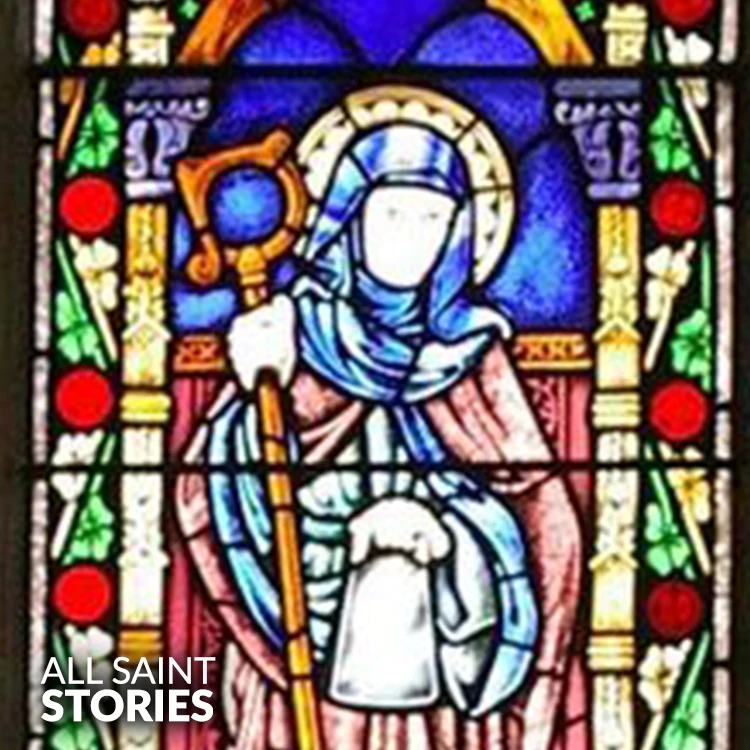"Saint Bronagh, who led your life in humility and dedication to God, guiding those in need with compassion, we ask for your intercession. May we, too, follow your example of selflessness and service. Protect us in times of danger, especially when we face the storms of life. Amen."
ST. BRONACH
ST. BRONACH

Saint Bronagh was a 6th-century Irish saint who established a monastic community near Carlingford Lough, in Kilbroney, County Down. Known for her compassion and dedication, she provided refuge to those in need, particularly sailors. Her legacy endures through the local pilgrimage and her association with a bell that warned seafarers of danger. Her feast day, celebrated on April 2nd, honors her contributions to the community and faith.
Saint Bronagh, also known as Brónach, was an influential figure in 6th-century Ireland, a time when monastic communities were foundational to the spiritual life of the Irish people. She is most famous for founding a monastic community in the serene valley of Glen Sechis, now known as Kilbroney, located in what is now County Down, Northern Ireland. The settlement she established became a sanctuary for those in need, with a particular focus on sailors, who were often at risk due to the perilous waters of Carlingford Lough. The region’s treacherous waters earned a reputation for shipwrecks, and Saint Bronagh’s community played an instrumental role in providing shelter, solace, and safety to those who were caught in storms or faced shipwrecks.
Legend has it that she was a disciple of Saint Patrick, and it is believed she received guidance from him in her faith journey. Saint Bronagh's faith and care for the sick and distressed earned her the respect and love of those around her. Her influence extended beyond her monastic community, and she is said to have been an active spiritual leader who played a significant role in the early Irish Christian church. It is said that during storms, the bell associated with her would ring to warn sailors of approaching danger, reinforcing her legacy as a protector of those at sea.
The bell linked to Saint Bronagh has a significant place in the region’s folklore. According to tradition, the bell was discovered in 1839 when a strong storm uprooted a large oak tree in Kilbroney Graveyard. Inside the tree’s trunk was the bell, which was later displayed in the Star of the Sea Church in Rostrevor. The bell is now a symbol of Saint Bronagh's enduring legacy and her role in guiding and protecting people, particularly seafarers. Her feast day is celebrated annually on April 2nd, a day that honors both her contributions to Irish monasticism and her ongoing influence in the local community.
The Kilbroney Graveyard, located near the ruins of the Kilbroney Church, remains an important site for pilgrims and visitors alike. The site includes a high cross made of Mourne granite, which is believed to mark the saint's final resting place. In addition to the cross, the area is home to a holy well, which is attributed with healing properties, particularly for ailments of the eyes and throat. Local lore tells that the well sprang from the ground where Saint Bronagh’s blood was said to have fallen after being struck by a Viking chief.
In recent years, a modern pilgrimage route called the St. Bronagh’s Camino has been established, which retraces the path to Kilbroney Graveyard. Pilgrims participating in this route reflect on Saint Bronagh's life and the contributions she made to her community and the Church. The pilgrimage, often held on her feast day, has been revived as part of efforts to maintain local traditions and to honor the saint’s legacy.
Her story is recorded in several Irish martyrologies, including those of O'Clery and Tallaght. Saint Bronagh’s genealogy traces her lineage to the Kings of Dalriada, and she is believed to be the mother of Saint Mo Chóe of Nendrum, further intertwining her legacy with the broader history of Irish saints. Her impact, both spiritually and physically in her community, has lasted for centuries and continues to be celebrated in the region to this day.
Video Not Found
No images uploaded for this saint yet.
The information on this website is compiled from various trusted sources. While we aim for accuracy, some details may be incomplete or contain discrepancies.
If you notice any errors or have additional information about this saint, please use the form on the left to share your suggestions. Your input helps us improve and maintain reliable content for everyone.
All submissions are reviewed carefully, and your personal details will remain confidential. Thank you for contributing to the accuracy and value of this resource.
Credits & Acknowledgments
- Anudina Visudhar (Malayalam) – Life of Saints for Everyday
by Msgr. Thomas Moothedan, M.A., D.D. - Saint Companions for Each Day
by A. J. M. Mausolfe & J. K. Mausolfe - US Catholic (Faith in Real Life) – Informational articles
- Wikipedia – General reference content and images
- Anastpaul.com – Saint images and reflections
- Pravachaka Sabdam (Malayalam) – Saint-related content and insights
We sincerely thank these authors and platforms for their valuable contributions. If we have unintentionally missed any attribution, please notify us, and we will make the correction promptly.
If you have any suggestion about ST. BRONACH
Your suggestion will help improve the information about this saint. Your details will not be disclosed anywhere.
© 2025 Copyright @ www.allsaintstories.com

 English
English
 Italian
Italian
 French
French
 Spanish
Spanish
 Malayalam
Malayalam
 Russian
Russian
 Korean
Korean
 Sinhala
Sinhala
 Japanese
Japanese
 Arabic
Arabic
 Portuguese
Portuguese
 Bantu
Bantu
 Greek
Greek
 German
German
 Dutch
Dutch
 Filipino
Filipino